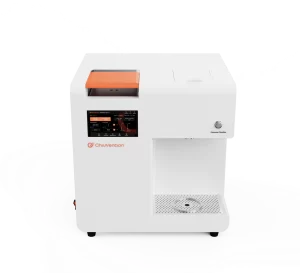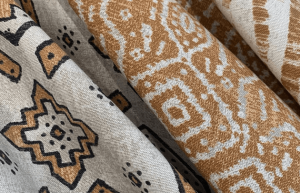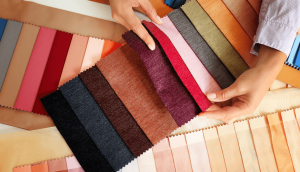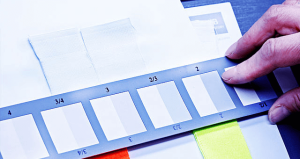Textile colour fastness, also known as dye fastness, is the ability of coloured textile product colours to resist various external effects without changing colour. This article will focus on explaining the improvement measures of the test method of colour fastness to washing for printed fabrics and the problems that should be paid attention to in the process of textile colour fastness.
The improvement of the test method of colour fastness to washing printed fabrics
The washing colour fastness test method standard adopted by the washing colour fastness test method standard is GB/T 3921.1 ~ 5-1997 “textile colour fastness test washing colour fastness: test 1 ~ 5”. This new standard is close to the international standard, from a standard of five methods in the past revised to an independent standard of five methods, which makes the standard more clearly organized and easier to apply. One of the biggest changes in the new standard is that the combination specimen of colour fastness to washing is changed from sewing on four sides to sewing on one short side only, which in principle makes the colour fastness to staining of lining fabrics have the intention of relaxation.
Lining fabric staining from the original direct transfer from the specimen and the absorption of dyes from the soap bath and change, mainly from the absorption of dyes in the soap bath and the formation of this and the colour fastness to perspiration, colour fastness to heat and pressure and other indicators of the lining fabric staining situation is different. These indicators in the specimen and undyed lining fabrics are in certain conditions closely linked to their lining fabric staining mainly from the specimen up.
Therefore, in the colour fastness to washing in the soaping bath in the number of dyes and shades directly affects the fabric staining fastness. The amount and shade of dyestuff in the soaping bath are closely related to the degree of discolouration of the colour fastness to washing. The changes that occur in the sample during the test can be changes in lightness, colour or hue or any combination of these changes. These changes with the concentration of soap, temperature, bath ratio, test time and rotation speed (currently used in cotton, wool, silk, linen, chemical fibres and their blends of dyed and printed fabrics, colour woven fabrics, silk, knitted, towels and other textiles in various industries. The test equipment applicable to colour fastness to washing according to the standard is mainly SW-12, SW-8, and SW-4 colour fastness to washing tester, which consists of a water bath pan equipped with a rotating shaft, and its rotational speed is 40r/min).
Under standard conditions, a number of different specimens of the same variety of printed fabrics are selected for parallel testing in different colour ratios according to the variety of dyestuffs and the colour characteristics (brightness, colour intensity, hue). Through a large number of tests on a number of varieties, it will be found that for different dyestuffs and colours of printed fabrics, under the premise of taking all the colours in accordance with the standard, the selected specimens, the proportion of various colours selected is different, and although the impact of discolouration of the original specimen is very small, the staining of the lining fabrics has an impact, especially on the staining of cotton lining fabrics has a greater impact. When the proportion of faded or darker shades in the sample taken is greater, the staining of the interlining fabric is heavier, and vice versa. According to the principle of selecting the most serious in the rating in the standard, the selection of the specimens of printed fabrics should not only take into account the full range of colours but also the proportion of various colours selected.
Some people, after repeated tests, think that in the 40mm x 100mm specimen cut from the printed fabric, the proportion of various shades of colour should preferably match the proportion of various shades of colour in the whole printed fabric. In particular, by analysing the nature of the dyestuff and the colour characteristics of the whole printed material, it is possible to find out which shades are darker and more discoloured, and the proportion of these shades in the specimen should be equal to the proportion of these shades in the whole printed fabric. Because they are the main source of dyes in the soaping solution, that is, the main source of undyed lining fabric staining, more representative of the nature of the fabric. If a single specimen does not give a complete colour, two or more combined specimens may be prepared as appropriate. The colour staining of the backing fabric for the colour fastness to washing of the printed fabrics made in this way is fairer and more reasonable.
In order to avoid the error of colour staining of the backing fabric caused by different operators for the same printed fabric due to the different selection of specimens, when selecting and preparing the test specimen of wash fastness of the printed fabric, the nature of the dyestuffs used and the characteristics of the colours should be taken into consideration. When selecting and preparing the test specimens of printing fabrics for colour fastness to washing, the nature of the dyes used and the characteristics of the colours should be taken into account, so that the test specimens taken can really be a microcosm of the whole printing fabrics, so as to ensure that different operators can get consistent results when doing the colour fastness to washing for the same printing fabrics and to make the testing of colour fastness to washing for the colour staining of the interlining fabrics of the printed fabrics more reasonable, just and practical.
Problems to be noted during textile colour fastness testing
The test result of colour fastness is a comprehensive reflection of the process from sampling, test operation to colour fastness rating. Only by virtue of a high degree of responsibility and scientific, in line with the standard test means and test methods, do a good job at every step of the work, and reduce human error, in order to make the test results more scientific and representative.
The following is an example of printing and dyeing fabrics to talk about some problems that should be paid attention to in the testing process of colour fastness items (colour fastness to washing, rubbing, perspiration and ironing) of regular assessment.
Sampling
Sampling should be representative and should represent the real level of quality of batch dyeing or printing products as far as possible. First of all should be in the finishing room to get samples, each batch of cloth to take 3 pieces (randomly selected), the sample appearance should be no wrinkles, no colour difference, no defects; and then according to the test requirements were cut on each sample sample; the final test results according to the provisions of the colour fastness rating, each sample rating, 2 qualified as a whole batch of qualified, and vice versa, as a batch of unqualified.
Selection of lining fabric
Only single-fibre lining for example. If the specimen is pure textile, the first lining (affixed to the front of the specimen) with the specimen fibre of the same genus; and the second lining (affixed to the reverse side of the specimen) according to the test method in the specified category selection. If the specimen is blended or interwoven, the first lining is of the same genus as the main fibre of the specimen, and the second lining is of the same genus as the secondary fibre. According to the above principles to select the lining fabrics, printed fabrics for colour fastness to brushing, the specimen will be sandwiched between 2 pieces of lining fabrics to form a combination of specimens; for fastness to perspiration, the front side of the specimen is in contact with 1/2 of each of the 2 pieces of lining, the remaining 1/2 is cut off and cross-covered on the back side, and sewed together with the two short edges. For all tests of colour fastness, more than one specimen or combination of specimens is required if the printed fabric specimen or combination of specimens does not contain all the colours on the product. For rubbing and brushing fastness, the position of the specimen should be carefully chosen so that all colours are rubbed (or brushed). If the set of colours of the product is many and scattered, it is necessary to take more than one specimen.
Experimental conditions
Specimens and lining fabrics generally do not need special humidification, but should not be too wet or too dry.
Experimental apparatus
According to the test method standard specified. It should be specially pointed out that the traditional water bath cannot be used for colour fastness to washing test, because it can not achieve the effect of the standard applicable equipment.
Operation points
(1) Bath ratio
This refers to the ratio of the volume of the test solution (expressed in mL) to the mass of the specimen or combination of specimens (expressed in g). The bath ratio for routine test items is generally 50:1.
(2) Wetting
Wetting specimens should ensure uniform moisture permeability. Especially for fabrics with special finishing and wool or wool blended fabrics, they should be placed in distilled water and kneaded thoroughly by hand or with a flat-tipped glass rod. Some combinations of specimens or lining should be wetted to a moisture content of their own weight. The combination of specimens or lining should be weighed, soaked in distilled water and then rolled between two rubber rollers and weighed again. If the water content does not meet the requirements, you can adjust the tightness of the rollers. Hand twisting can not reach a uniform wetting degree.
(3) Liquid
The test solution is generally required to be used now, especially the sweat fastness test solution (including acid, alkali), is imitated human sweat body fluids, its acidity (pH value) is strictly regulated. If the test solution is left for a long time, the pH value will not reach the standard requirement. Meanwhile, L-histaminic acid hydrochloride in the sweat stain liquid is unstable in nature, and its aqueous solution is more sensitive to light and heat, and is easy to decompose. It is better to use fresh test solution for washing fastness, because the carbon dioxide in the air dissolves in it to form carbonate, and the alkalinity of the test solution will be reduced after a long time.

(4) Cleaning of specimen
Resistant to washing, colour fastness to scrubbing test samples need to be cleaned with distilled water, and then rinsed with tap water. Because tap water hardness, calcium ions in water, magnesium ions and test samples with the test solution in the soap molecules to generate insoluble “calcium soap” and “magnesium soap”, attached to the fabric surface to form stains are not easy to remove, affecting the rating. Colour fastness to perspiration test after the sample is not washed directly dry. When doing the brushing fastness test, the order of brushing specimens should be from light to dark. It is best to do a specimen, clean the brush and platform in a timely manner, so as not to stain the next specimen.
-300x213.webp)
(5) Specimen drying
Standards require that the specimen or a combination of specimens hung up to dry naturally or in the hot air not exceeding 60 ℃ drying. It is more scientific and reasonable to use flat drying, because some dyes have poor affinity for fibre and low colour-fixing ability, and in the process of hanging and drying, under the action of gravity, the dyes on the discolouration and staining samples will swim with the water molecules, and after drying, it will result in the discolouration of the samples after the test, and the staining of the samples will be uneven, which will affect the results of the test.

Colour fastness rating
(1) Paste sample
When applying the sample, the pattern and colour of the sample should be the same as the original sample;
The cutting and pasting area should not be smaller than the grey card;
There should be no gap between the original sample and the test sample, and keep the same direction of warp and weft.
(2) Observation and lighting conditions
When grading, generally use a natural light source or an equivalent light source, illuminance is equal to or greater than 600lx. Our country is located in the northern hemisphere, the application of northern daylight, incident light and the fabric surface of about 45 ℃ angle, the direction of observation is roughly perpendicular to the surface of the fabric, the original sample, the test sample and the sample side by side close to be placed on the same plane. In order to avoid the appearance of the fabric being affected by other backings, two or more layers of the original fabric can be taken and padded under the original sample and post-test sample. Rating when the set of frame assessment.
(3) Rating judgement
Rating, the original sample and the post-test sample should first make a visual judgment of the colour difference, and then the colour difference between the two and the grey card of the level of difference against the grey card to see which level is consistent with or close to the grey card, as a post-test sample of the fastness level.
Only when there is no colour difference between the original sample and the test sample can it be classified as Grade 5. The changes that occur in the sample during the test can be changes in hue, depth and height or any combination of these changes, but regardless of the nature of the change, the total colour difference between the original sample and the test sample is the basis for assessment.
(4) The handling of special circumstances
Printing specimens are mostly colour, rating, should be the worst colour fastness of colour shall prevail, if the colour pattern is very small is not the main colour, can be relaxed.
For some printed fabrics (e.g. after special finishing), there may be a significant colour difference between wetted and unwetted, which does not represent a true change in colour, but rather a variation in the surface of the fabric or a swim shift in the finishing.
For grading purposes, the wetted specimen should be used as the original specimen. In some tests, in addition to the colour change, the appearance of the specimen may also change, such as the inversion of the fluff, the structure, the change of lustre, etc. At this time, it can be used to comb or brush gently, as far as possible, to make the surface of the specimen return to its original state. If it is not possible to return to its original state, it should be explained in the report of the results. Sometimes, after the washing test, the colour of individual dark-coloured specimens will become lighter because of a layer of cataracts on the surface of the specimen, which can be eliminated by rubbing gently with the hand.
In the rubbing fastness test, the appearance of deep edges on the rubbing cloth will not be taken into account in the grading. The lint on the rubbing cloth should be brushed away before grading.
(5) Initial and re-assessment
In a batch of specimens rating, the first colour classification for the initial evaluation, the first evaluation of the softer colours of the specimen, and then the bright eye-catching specimens, and then, will be rated at the same level of fastness to each other for side-by-side comparisons, and if there is inconsistency will be picked up, against the grey card to re-assess (re-evaluation).
When grading, attention should be paid to the fatigue of the eyes, if there is any discomfort, close your eyes and rest. In general, regardless of the number of specimens, one person should make the first assessment and another person should make the reassessment.
For the detailed instructions of colour fastness assessment results, you can go to this article: Accuracy And Stability Of Colour Fastness Assessment Results.


